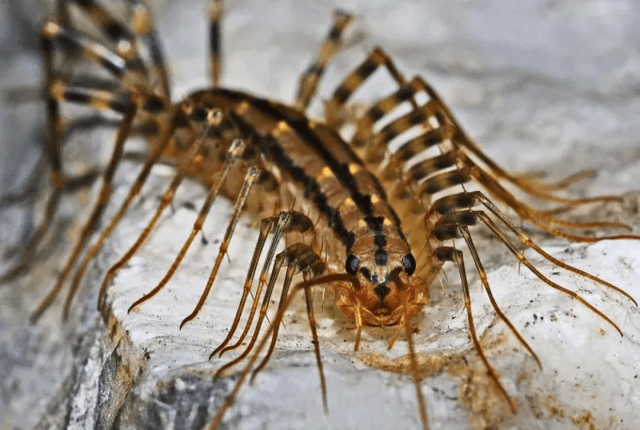House centipedes (Scutigera ceoleoptrata) are long, flat arthropods with many legs, one pair on each body segment. They belong to the class Chilopoda. The adult house centipede has 15 pairs of legs with the last set on adult females almost double the length of the body. The total length varies from 1-4 inches (from antennae to legs ending). Its body has a dirty yellow or reddish brown color with three longitudinal, dark stripes, and light and dark hooped legs.
Habitat
House centipedes are found in buildings as their name suggests and reproduce significantly under heated structures. By day, they inhabit dark, damp crevices in the home and come out by night. They feed on fish, beetle larvae, cockroach, spiders and other arthropods.
They get into spaces in concrete slabs and make way into the house through:
- Expansion cracks, inside uncapped cement block walls.
- Around pipes in walls, in floor drains without water traps that are connected to dry sumps, under.
- Cardboard boxes that are stored on slabs, and crawl holes around the rooms.
They are naturally predaceous on other arthropods and insects. They possess poison glands and inject their venom through modified mouthparts, but the bites are infrequent and cause just temporary pain around the area only.
Prevention and Control
- The first step to reducing the presence of centipede is to minimize the potential meal in the house especially other arthropods.
- Then clear clutter that offers hiding and breeding ground for centipedes.
- Food should not be stacked against the wall or laid on the bare floor.
- Repair water leaks, seal holes, cracks, and gaps that allow movement of centipedes.
- Install window screen in drains of the basement to stop centipedes from entering through dry stumps.
- The final move is to use chemical control methods. Professional Pest control experts should be called in, and pesticides should be applied on suspicious areas.


